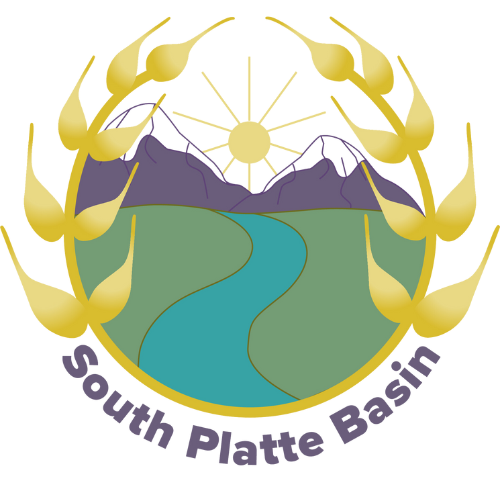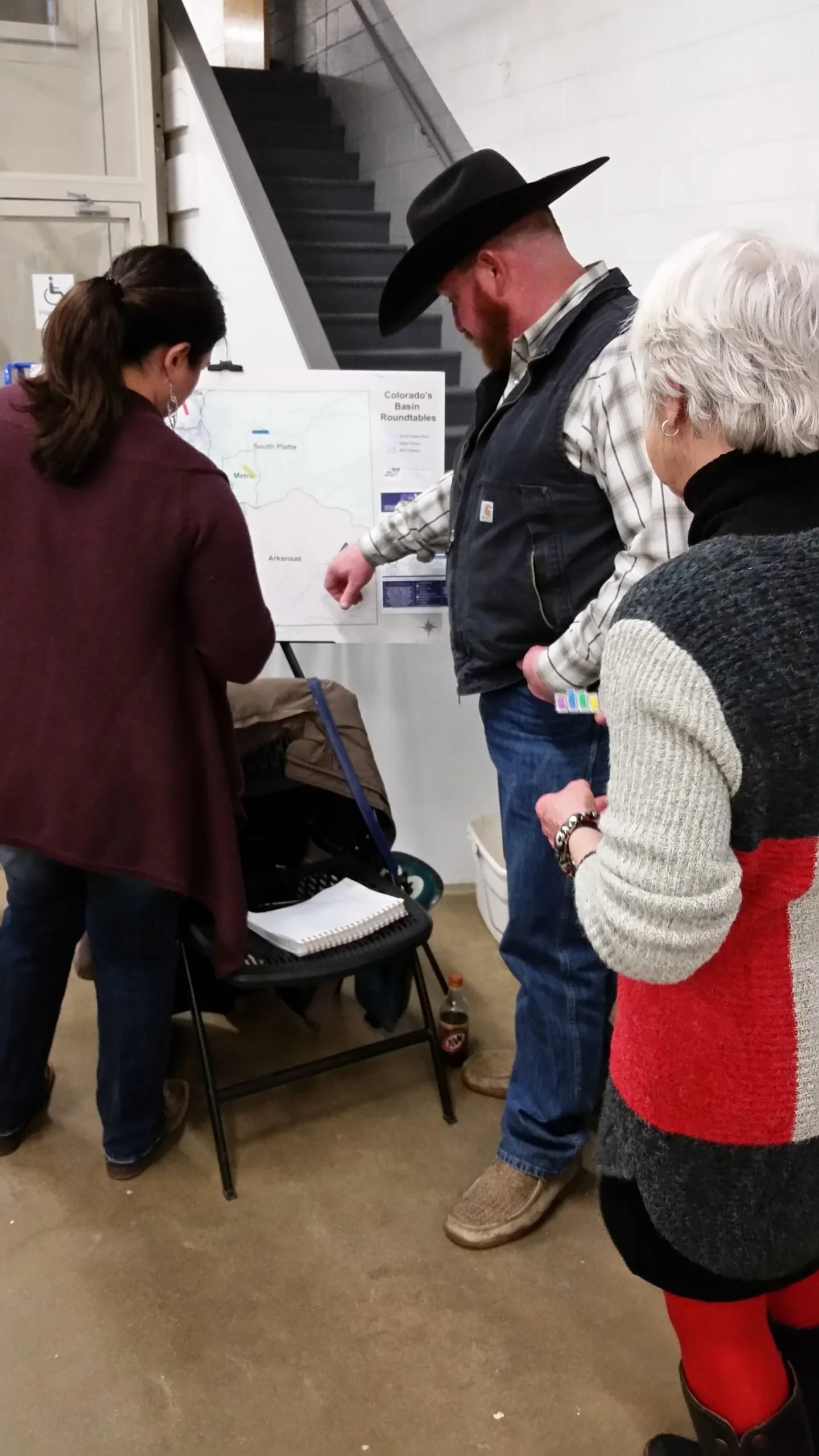At the Colorado Farm Show in Greeley, folks of all different ages were drawn in to the South Platte watershed booth by two large maps—one of Colorado’s river basins and another of the South Platte River Basin with county delineations. Casey Davenhill, the Public Education, Participation, & Outreach (PEPO) liaison for the South Platte and Metro roundtables, or her program assistant at Colorado Watershed Assembly Mallory Hiss invited, each visitor to place an arrow on the map to mark their home watershed. After taking their first tentative steps toward the South Platte Basin (SPB) PEPO booth, people often had stories or questions about the water projects and personal wells in their river basin. The two PEPO representatives would point to the South Platte’s Water Facts handout to show the population projections: by 2050 the SPB may support 2.5 million more residents. While many folks gawked at future gathering in colorful Colorado, Casey and Mallory were prepared with the South Platte Basin Implementation Plan (BIP) Factsheet, to reassure citizens that there is an 11-part plan featuring storage, conservation, protection, and leveraging West Slop supply.
Producers, water professionals, and members of the public with know-how were introduced to the South Platte Regional Opportunities Water Group (SPROWG) Storage Study two-page handout. Using that resource, the two booth educators explained the South Platte’s potential future ability to store water off-river and re-use it before sending thousands of underutilized acre-feet to states beyond.
Families and producers completely extinguished the supply of Best Management Practices (BMPs) brochures for protecting water quality in a world of household, garden, and cropland chemicals. Many people who call the South Platte Basin home also have a Septic Smart handout hanging on their fridge today! Those handouts from CSU Extension gave families practicable goals after they saw the groundwater model. The model of pollution and percolation, loaned from Paul Hempel with Colorado Rural Water Association & Source Water Assessment & Protection (SWAP), drew in children and adults alike to view layers of rock holding groundwater, a sight usually unseen. Groups of people peered over each other to get a glimpse of food coloring contamination, imitating well water potential risk from manmade chemical leaching. (BMPs)
Particularly productive and engaging conversationalists went home with a designed bandana to protect them from the elements and share South Platte Basin water facts. The Colorado Farm Show was a brilliant opportunity to make crucial connections with the people in our river basin, who all share the common goal of protecting water quality and conserving water quantity. Look out for new voices at the next basin roundtable meeting!




